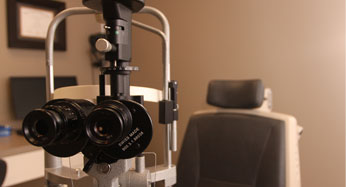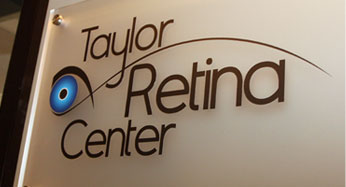Our retina specialists are board certified in ophthalmology, have completed a retina disease fellowship and have performed thousands of retina procedures. Our doctors and their staff share a common mission to provide the most up-to-date medical care in an environment that is compassionate and patient-centered.
Intraocular Injections
Novel drug therapies have been discovered that are able to effectively treat many different eye diseases. Because the eye is somewhat isolated from the rest of the body, the use of eye drops, pills, or IV medications may not be strong enough to enter the eye and produce the desired long-term effect. Over the past 15-20 years we have discovered numerous medications that are safe and effective when injected directly into the vitreous jelly which fills the eye. This allows the medication direct access to the inside of the eye where it can remain effective for weeks or months with a single injection.
Avastin, Lucentis, and Eylea
Avastin was initially developed as a chemotherapy used to treat cancer. It works by attacking abnormal blood vessels that feed the cancer cells. In 2005 it was discovered that Avastin could be injected directly into the eye and stop abnormal blood vessel growth that occurs in various different eye diseases. Initially, it was found to be effective in patients with "wet" macular degeneration who would otherwise develop legal blindness. Lucentis is a smaller Avastin molecule that has undergone more extensive testing and is FDA approved for use in the eye. Eylea is a newer treatment approved in November 2011 that is also a very effective drug. All of these medications are used commonly throughout the USA and the world and have revolutionized treatment of many eye conditions.
Kenalog or Triesence
Steroid injections into the eye have been effective for some time at treating swelling or "edema" of the retina. They are also used in management of uveitis and other diseases that cause inflammation in the eyes. While they have proven to be safe, they are known to cause worsening cataract over time and can cause the eye pressure to rise. While this usually is temporary and can be managed with drops, occasionally people can have a pressure spike, develop glaucoma, and even require surgery to bring the pressure down.
A new steroid implant called Ozurdex has been developed that is administered in the office. The steroid is contained in a filament and slowly absorbs over 2-5 months. This is similar to an “extended release” tablet and is very effective for certain eye conditions. It is similar to Triesence and can occasionally cause the eye pressure to rise.
Procedure
The fear of getting a shot in the eye causes a significant amount of apprehension among many of our patients (and rightly so!). Fortunately, all of our doctors have administered thousands of eye injections and have extensive experience managing any possible complications. Our staff is compassionate and will make sure you are as comfortable as possible during the procedure. Our physicians perform each eye injection in a safe and almost painless fashion.
As with any needle entering the body, there is a small risk of infection. Fortunately, this is rare and occurs in less than one in a thousand shots. An infection occurs a few days after the shot when the vision suddenly becomes blurry and cloudy and the eye becomes sore and red. This is an emergency and requires an urgent examination and treatment because vision can be permanently lost. If you have any concerns after a shot, please don't hesitate to call us directly at any time, 24 hours a day, 7 days per week.



